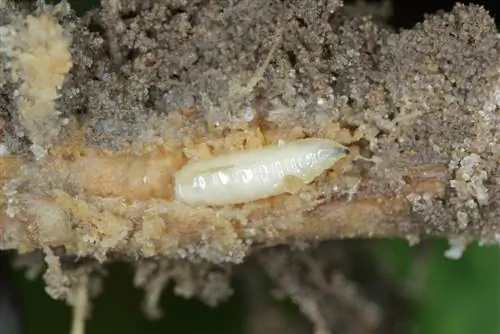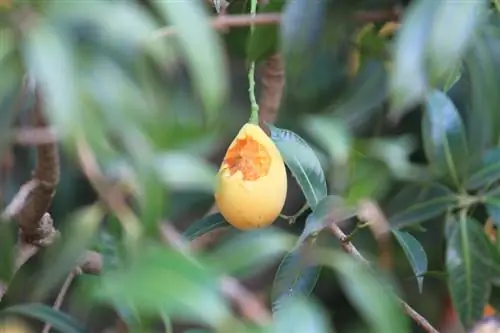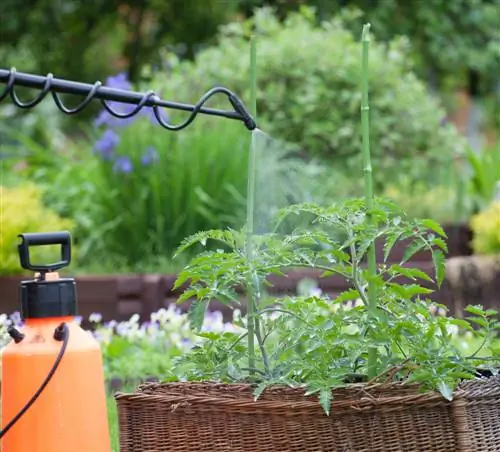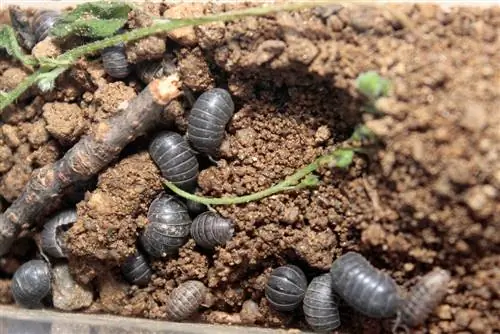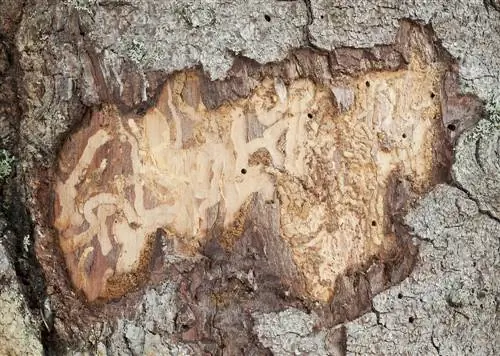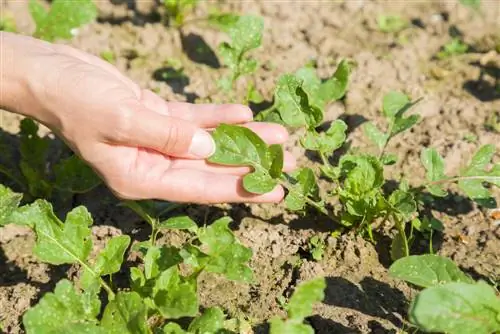- Author admin [email protected].
- Public 2023-12-16 16:46.
- Last modified 2025-01-23 11:22.
It is annoying when the yields in the garden are minimized by pest insects. By planting cauliflower in spring or autumn, you reduce the risk of pest infestation. Susceptibility is higher during the summer months.
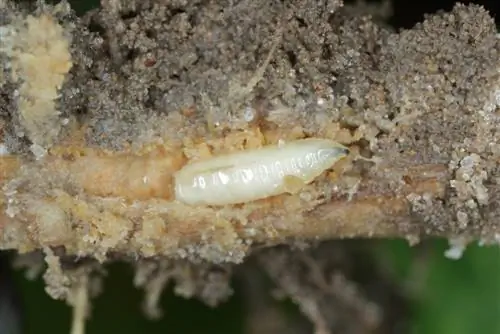
Which pests often attack cauliflower and how can you control them?
Common pests of cauliflower are cabbage flies, leaf midges, cabbage weevils and aphids. Measures such as close-meshed nets, mixed cultures, neem press cake or the promotion of natural opponents such as parasitic wasps help against these pests.
cabbage fly
These insects lay their eggs on the root collar, so the pests can appear on a large scale from April onwards. The larvae damage the stem and wilt the outer leaves of the cauliflower. A severe infestation can destroy an entire crop within a short period of time. Plant injuries lead to secondary diseases such as bacterial soft rot.
Measures
Protect young plants with a tight-meshed net so that adult flying insects cannot reach the plant stand. Create mixed cultures. You can achieve a deterrent effect if you plant borage. If the insects have spread, pull the affected plants out of the ground. If the infestation is low, remove the pests and replant the cauliflower. Severely infested plants must be disposed of with household waste.
Rotating heart mosquito
They place their eggs on the heart leaves so that their offspring have a fresh source of food. The growth of the cabbage plant, which often shows twisted leaves, flowers and shoot tips with a spiral shape, is impaired. If infested in the early growth stage, the heart atrophies completely. Secondary diseases such as heart and stem rot are possible.
Prevention
The cabbage midge is considered to be site-faithful and will almost completely disappear if you do not grow any host plants for at least two years. There should be no multiple cultivation of cabbage species on one bed in the following years, as this practice encourages the pest. Chemical treatments are not recommended. They only show success during the short flight time of the insects.
Cabbage weevil
An infestation by weevils can be detected by galls at the base of the plant or in the heart. They serve as a breeding ground for the larvae, which eat their way through stems and leaves after they hatch. The plant parts show yellowish discoloration and eventually fall off.
This is what you can do:
- Collect pests from plants at night
- Neem press cake buried in the bed
- apply special nematodes via the irrigation water
Tip
Before the leaves emerge, wrap a 20 centimeter long strip of cardboard around the base of the plant. Apple blossom pickers hide here in the evening, which you can easily collect in the morning.
Aphids
The mealy cabbage aphid causes yellow spots that resemble blisters. The harmful insects suck on all parts of the plant. In rare cases, such suction sites turn red due to anthocyanin formation. In addition to the indirect damage, a louse infestation leads to secondary diseases. Aphids are vectors of cauliflower mosaic and cabbage black ring viruses.
Remedy
The plant sapsuckers use cruciferous plants as host plants. Remove leftovers from last season from the bed to minimize the chances of successful overwintering. Close-meshed cultural protection nets protect young plants from colonization. Encourage natural enemies such as parasitic wasps.

